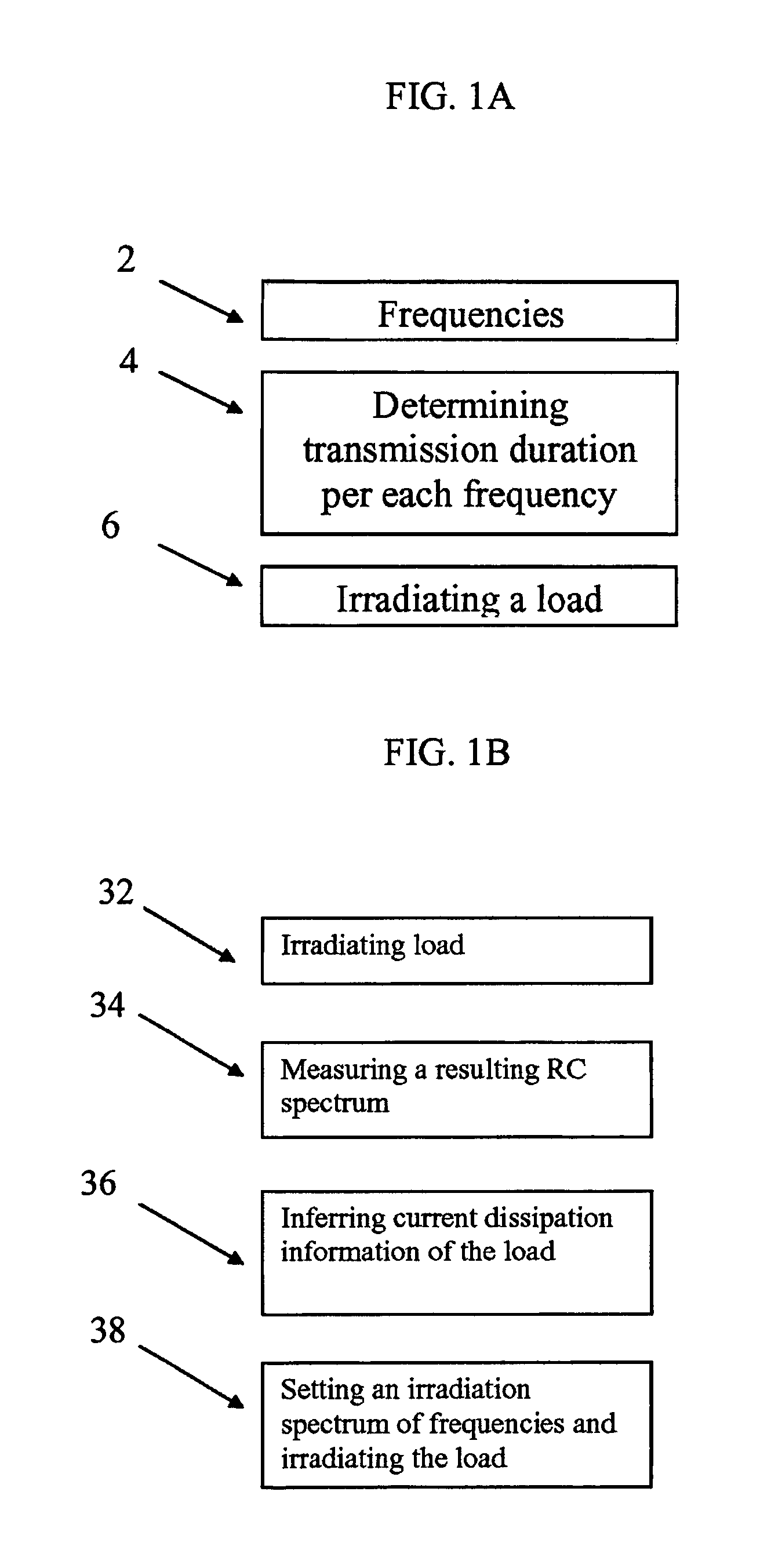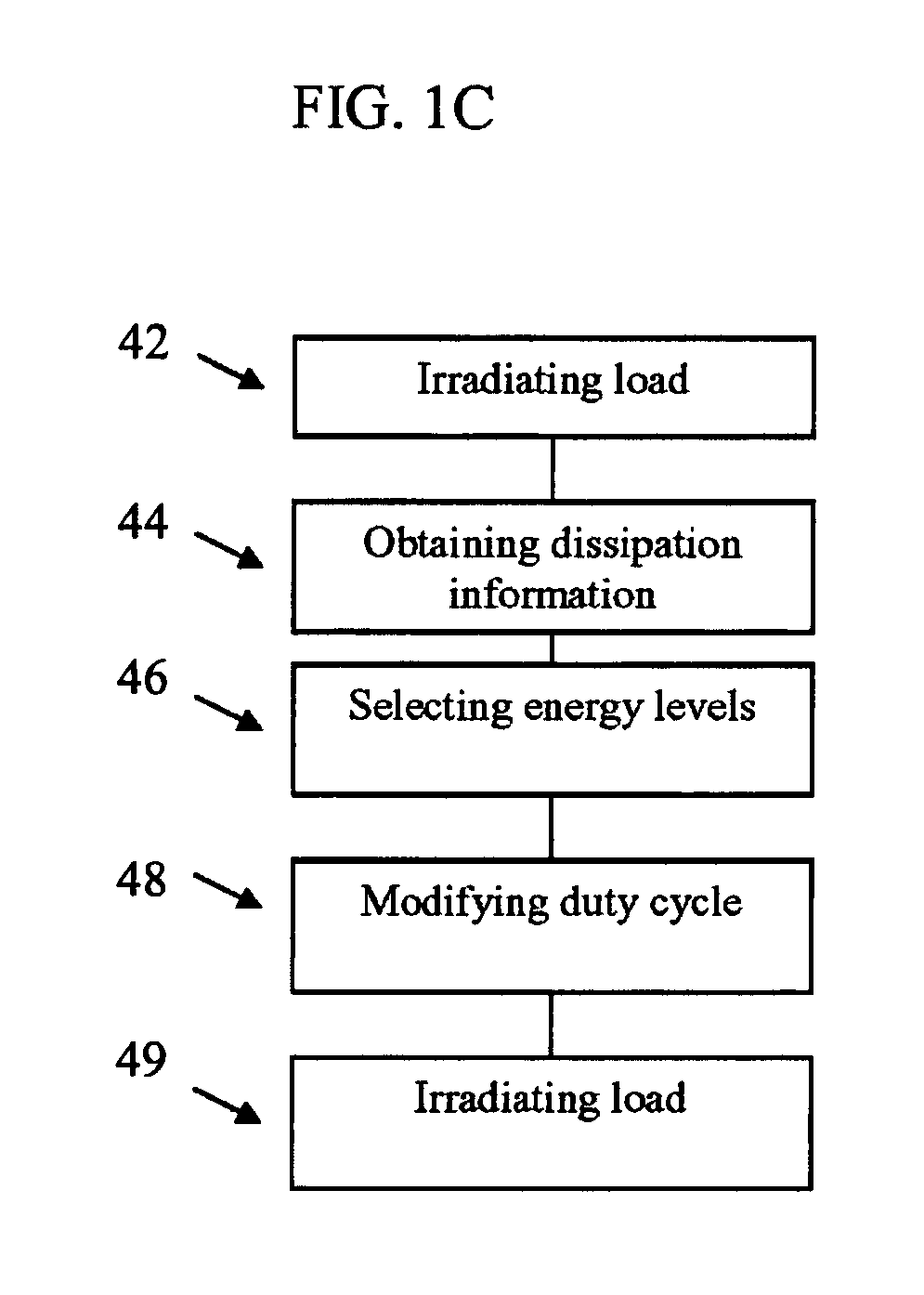Device and method for controlling energy
a technology of electromagnetic energy and control device, which is applied in the direction of electric/magnetic/electromagnetic heating, lighting and heating apparatus, etc., can solve the problems of lack of uniform heating, hot spots and cold spots
- Summary
- Abstract
- Description
- Claims
- Application Information
AI Technical Summary
Benefits of technology
Problems solved by technology
Method used
Image
Examples
Embodiment Construction
[0065]The present embodiments comprise an apparatus and a method for controlling the amount of EM energy that dissipates into a load at each transmitted modulation space element (MSE; as will be described below in detail) and in particular, to such a controlling through modulation of the period in which each MSE is transmitted, particularly within a duty cycle of the MSEs. The dissipation of energy may be used, for example, for any form of heating utilizing irradiation of energy, at times without a temperature increase, including one or more of thawing, defrosting, warming, cooking, drying etc. The term “electromagnetic energy” or “EM energy”, as used herein, includes any or all portions of the electromagnetic spectrum, including but not limited to, radio frequency (RF), infrared (IR), near infrared, visible light, ultraviolet, etc. In one particular example, applied electromagnetic energy may include RF energy with a wavelength in free space of 100 km to 1 mm, which is a frequency ...
PUM
 Login to View More
Login to View More Abstract
Description
Claims
Application Information
 Login to View More
Login to View More - R&D
- Intellectual Property
- Life Sciences
- Materials
- Tech Scout
- Unparalleled Data Quality
- Higher Quality Content
- 60% Fewer Hallucinations
Browse by: Latest US Patents, China's latest patents, Technical Efficacy Thesaurus, Application Domain, Technology Topic, Popular Technical Reports.
© 2025 PatSnap. All rights reserved.Legal|Privacy policy|Modern Slavery Act Transparency Statement|Sitemap|About US| Contact US: help@patsnap.com



